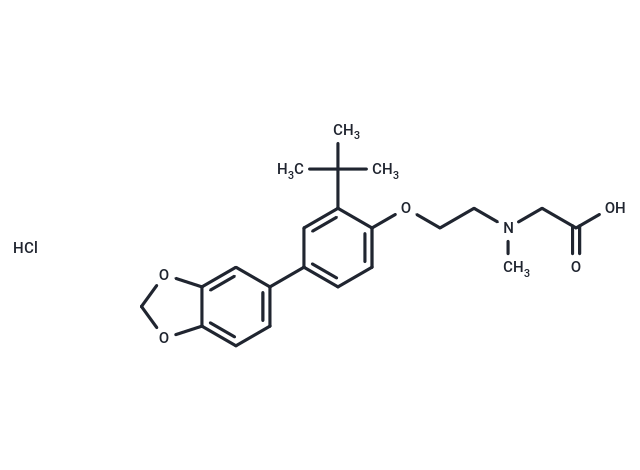Shopping Cart
- Remove All
 Your shopping cart is currently empty
Your shopping cart is currently empty

LY2365109 hydrochloride is a potent and selective GlyT1 inhibitor, with an IC50 of 15.8 nM for glycine uptake in cells over-expressing [hGlyT1a].

| Pack Size | Price | Availability | Quantity |
|---|---|---|---|
| 1 mg | $34 | In Stock | |
| 2 mg | $48 | In Stock | |
| 5 mg | $80 | In Stock | |
| 10 mg | $128 | In Stock | |
| 25 mg | $247 | In Stock | |
| 50 mg | $372 | In Stock | |
| 100 mg | $538 | In Stock | |
| 1 mL x 10 mM (in DMSO) | $89 | In Stock |
| Description | LY2365109 hydrochloride is a potent and selective GlyT1 inhibitor, with an IC50 of 15.8 nM for glycine uptake in cells over-expressing [hGlyT1a]. |
| Targets&IC50 | GlyT1 (human):15.8 nM nM |
| In vivo | LY2365109 hydrochloride increases seizure thresholds in mice[2].LY2365109 hydrochloride (0.3-30 mg/kg; p.o.) produces dose-dependent elevations in CSF levels of glycine[1].? |
| Molecular Weight | 421.91 |
| Formula | C22H28ClNO5 |
| Cas No. | 1779796-27-8 |
| Smiles | Cl.CN(CCOc1ccc(cc1C(C)(C)C)-c1ccc2OCOc2c1)CC(O)=O |
| Relative Density. | no data available |
| Storage | Powder: -20°C for 3 years | In solvent: -80°C for 1 year | Shipping with blue ice. | ||||||||||||||||||||||||||||||
| Solubility Information | DMSO: 30 mg/mL (71.11 mM), Sonication is recommended. | ||||||||||||||||||||||||||||||
Solution Preparation Table | |||||||||||||||||||||||||||||||
DMSO
| |||||||||||||||||||||||||||||||

Copyright © 2015-2025 TargetMol Chemicals Inc. All Rights Reserved.